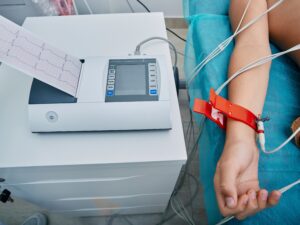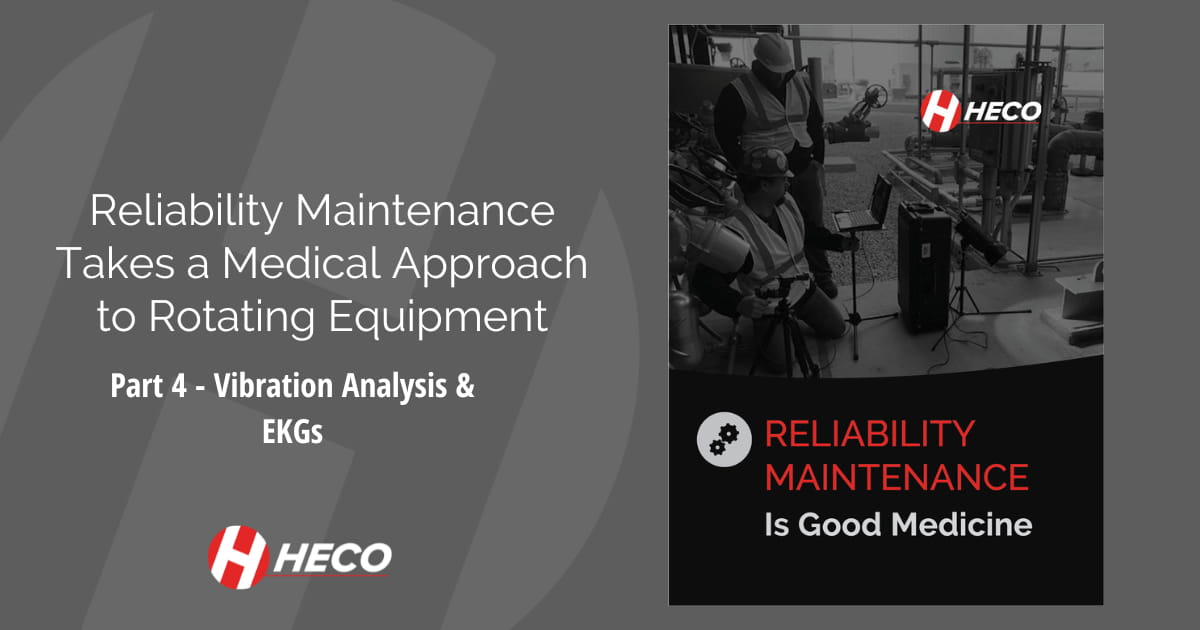Reliability Maintenance Takes a Medical Approach to Rotating Equipment, Part 4 – Vibration Analysis & EKGs - HECO
April 3, 2024
The days of tearing a machine apart to remedy an unknown problem are all but gone thanks to the use and accuracy of noninvasive testing and maintenance techniques. Luckily for the human body, noninvasive testing also makes diagnosing illnesses less painful and dangerous as well.
In healthcare, EKGs are a common, noninvasive way to examine the inner workings of the heart. At HECO, our technicians perform vibration analysis to gain similar insight without deconstructing a machine.
Let’s explore how industrial vibration analysis gets to the heart of reliability and Predictive maintenance.
A Doctor’s Prospective

An EKG, also known as an ECG or electrocardiogram, is a noninvasive, painless test used to monitor your heart. Each beat of your heart is triggered by an electrical impulse and these tests record the heart’s electrical signals.
Medical professionals use an EKG to look for patterns among these heartbeats to diagnose various heart conditions.
Before any sort of medical procedure, many doctors recommend capturing a non-emergency EKG to use as a baseline for comparison if a possible cardiac event occurs.
Mechanical Methodology
Vibration analysis is the industrial equivalent of the EKG. Like its medical counterpart, vibration analysis takes a noninvasive approach. It seeks to determine the mechanical condition of various components in rotating machinery.
Vibration analysis is the most useful of the predictive technologies for rotating machinery because of its ability to detect a variety of issues.
Some of the problems it can detect are:
- Imbalance.
- Misalignment in couplings, pulleys, shafts, and bearings.
- Looseness in structural components and/or the rotating assembly.
- Bearing race/roller defects.
- Flow (process) related issues such as pump cavitation, pump flow away from the pump curve, and fan or compressor surge.
- Electric motor-related issues such as rotor bar defects, stator eccentricity, motor soft foot, and rotor eccentricity.
- Resonance (natural frequency).
Healthy Data
Vibration diagnostic plots include the time waveform (very similar to the EKG) and FFT (frequency). Gathering a healthy amount of data is helpful in forming a full picture of operating conditions, whether you are evaluating a heart or an electric motor. Having data points that compare issue-free and problematic symptoms is also informative to paint a broad picture of the system’s threshold and average condition.
Current medical practice suggests that a baseline EKG be obtained before any heart conditions are suspected and periodically as aging occurs. This provides the medical specialist with the ability to compare EKG results over a period of time and trend changes.
Predictive maintenance using vibration trending has proven to be an equally powerful technique. It can help identify patterns within operations to highlight potential issues before they occur, saving your facility from unplanned downtime and costly repair and replacement fees.
All Systems Go
When an electric motor or piece of rotating equipment needs a house call, turn to the HECO team for help. We’ll handle everything – from the testing and diagnostics to prescribing the next course of action and rehabilitating your system to reach its optimal health.
Contact us to discuss what ails your rotating equipment.
To date, the Reliability Maintenance Takes a Medical Approach to Rotating Equipment series includes:
- Part 1 – A Prescription for Healthy Systems.
- Part 2 – Temperature Measurements.
- Part 3 – Ultrasonic Testing.
Future posts in the series will include:
- Part 5 – Oil Testing & Bloodwork.
- Part 6 – Modal Analysis & EMGs.
- Part 7 – Crossovers & Similarities.
Posted in Predictive
